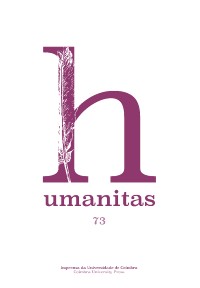Please use this identifier to cite or link to this item:
https://hdl.handle.net/10316.2/46538| Title: | A presença de Roma no Oriente: Iudaea Capta e as tradições culturais da Palaestina Romana | Other Titles: | The presence of Rome in the East: Iudaea Capta and the cultural traditions of the Roman Palaestina | Authors: | Teixeira-Bastos, Marcio Funari, Pedro Paulo Abreu |
Keywords: | Iudea Capta;Syria Palestina;Classical Archaeology;Iudea Capta;Syria Palestina;Arqueologia Clássica | Issue Date: | 2019 | Publisher: | Imprensa da Universidade de Coimbra | Abstract: | O artigo analisa a ocupação imperialista romana no Oriente Antigo, a consequente
dominação da Iudea e sua transformação em Syria Palaestina. Aborda o
debate actual sobre o tema, ilustrando também a temática com alguns exemplos da
Arqueologia. A demografia e a paisagem da região são tratadas com o objetivo de
demonstrar a intersecção de forças externas e de forças internas que definiram os
campos de ação nesse inter-fluxo de relações humanas. Argumenta que a adequada
administração imperial romana, a organização de uma rede de estradas ordenadas e
um sistema de tráfego eficiente, permitiram tanto a mobilidade militar, bem como
a formação de estratégias de suprimento, comunicação e controle da região pela população. Salienta categorias de análise, tais como poder, hegemonia, dominação
e resistência, para a discussão do tema, afirmando que a formação dos espaços é
inerente ao entendimento do próprio conceito de espaço, a esfera da simultaneidade,
co-formador do tecido social e das relações de poder. A negociação, nesse
sentindo, enquanto categoria analítica é o que fomenta espaços, alimenta as práticas
materiais, subsidia as identidades e media o poder. Por fim, o artigo evidencia a
importância da contextualidade social, dos contextos arqueológicos e dos contextos
de produção dos discursos, como ferramentas próprias para abordagens académicas
que privilegiem a percepção das distintas condições ideológicas e contradições
inerentes às interações sociais e materiais em contato. This paper analyzes Roman imperialist occupation in the Ancient East, the consequent domination of the Iudea and its transformation in Syria Palaestina. It addresses the demography and landscape of the region with the objective of demonstrating the intersection of external forces and internal forces that defined the fields of action in this interrelationship. It argues that proper Roman imperial administration, the organization of a network of orderly roads and an efficient traffic system allowed both military mobility and the formation of strategies for supplying, communicating and controlling the region by the population. It emphasizes categories of analysis, such as power, hegemony, domination, and resistance, stating that the formation of spaces is inherent in the understanding of the concept of space, the sphere of simultaneity, co-forming the social and power relations. States that the category of negotiation, in this sense, is what fosters spaces, feeds material practices, subsidizes identities, produces and mediates power. Finally, this paper points out to the importance of social contextuality, of archaeological contexts and of the contexts of discourse production, to approaches that privilege the perception of the different ideological conditions and contradictions inherent in social and material interactions in contact. |
URI: | https://hdl.handle.net/10316.2/46538 | ISSN: | 0871-1569 2183-1718 (PDF) |
DOI: | 10.14195/2183-1718_73_5 | Rights: | open access |
| Appears in Collections: | HVMANITAS |
Files in This Item:
| File | Description | Size | Format | |
|---|---|---|---|---|
| a_presenca_de_roma_no_oriente.pdf | 1.6 MB | Adobe PDF |  |
Items in DSpace are protected by copyright, with all rights reserved, unless otherwise indicated.
